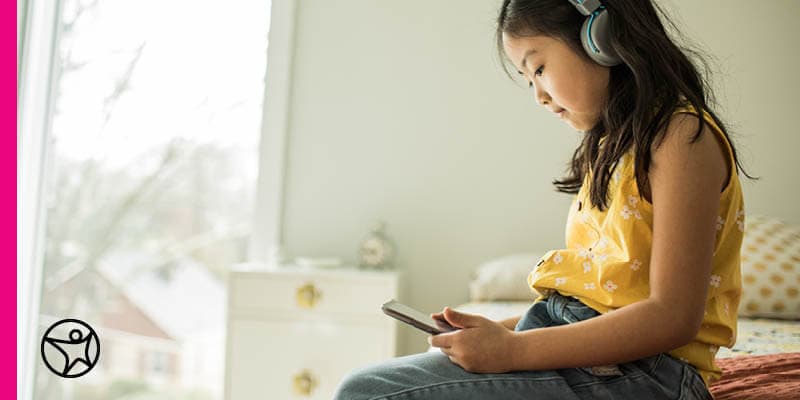Tips to Overcome Procrastination in School
by Kristina Cappetta
byElizabeth Preston
5 min to readSmartphones are a regular part of life but creating a separation between where phone time ends and class time begins may be a challenge for some students—especially when they attend school virtually.
Figuring out how to stop your student’s phone addiction and refocus their attention back on learning is possible. Here's how.
Research shows that people interact with their phones on average about 85 times a day, and that even the presence of a smartphone nearby reduces people’s ability to focus.
Having a smartphone within reach while your student is studying or in class means they might be distracted by the temptation to multitask. As harmless as scrolling on their phone during a lecture may initially seem, research finds that continually switching focus between different things can not only impact energy and productivity but may also result in something called “attention residue.”
Attention residue is when part of your brain is still distracted by the last task you were working on even while you are trying to focus on a new task. For example, if a student took a short break to scroll through social media right before they learn new vocabulary words, when they return to their homework, they may be able to only recall the posts they saw online rather than the new words they are supposed to learn.
Research shows that signs of phone addiction in students can show up in different ways. It can negatively affect their relationships and their social skill development, it can affect their sleep, impact their grades and academic performance, or even show up in physical symptoms like eye strain or neck pain.
Kids with phone addictions may also have a preoccupation with checking notifications, become restless, irritable, and anxious, or experience feelings of depression and loneliness.
Setting digital boundaries for when students are in class or doing homework can help students increase their efficiency and effectiveness.
Here are some ways to help your child stay focused and off their phone during school.
Identifying zones or rooms in the house where phone use isn’t allowed can help set up physical as well as digital boundaries for your student. For example, if they have a designated desk or room in the house where they attend class or complete schoolwork, make these areas a no phones space.
It may be helpful to set boundaries around the hours of the day kids can use their phone as well. For instance, they can use their phone before their first class but aren’t allowed to use it again until a break in their schedule or lunchtime. After school they can be on their phone until it’s time to begin their homework.
Creating boundaries around the times kids and teens can use their phone sets an expectation and a routine. To help your child transition between phone time in the morning and the start of the school day, task transitions like meditating, clearing off their desk, listening to a song, or stretching can help them redirect their focus.
You can use your child’s phone settings to create better digital boundaries.
Set time limits for apps: Many phones have built in controls that let you set time limits for apps, such as social media or games. Deleting apps and only checking notifications on a desktop or laptop are another way to help minimize endless scrolling.
Turn off notifications: Turning off notifications can help kids avoid FOMO—the fear of missing out—or anxiety from seeing missed notifications pile up.
Utilize Do Not Disturb: Schedule specific times in the day where messages and calls are silenced to help them stay focused. You can program in exceptions to allow specific numbers to get through if they need to, such as a Learning Coach or teacher.
Go grayscale: This phone setting turns your child’s screen black and white, making it much less interesting and eye catching. By reducing the color on the screen, many student find that they naturally reduce their screentime.
A student is more likely to be less resistant to changing their behavior if they understand why their behavior around their phone usage needs to change. Bringing them along in the decision helps them understand there is reason and purpose behind the action, and it will feel more like it’s in the student’s control rather than merely being an arbitrary rule.

Helping your child identify what makes them want to pick up their phone in the first place when they know they shouldn’t can be incredibly validating and another way to get them to come onboard with healthier phone habits.
Are they looking for connection or do they feel like they’re missing out? Suggest setting up a time for them to hang out with their friends or attend an event. Are they looking for comfort from stress? Teaching them stress management techniques can help them refocus and feel more settled when they begin feeling anxious about their phone.
Boundaries are necessary for students to learn how to become healthy and happy adults. Helping kids with phone addictions change their mindset about when and how they use phones can set them up to thrive and stay focused in their studies.
by Kristina Cappetta
by Kristina Cappetta
by Kristina Cappetta
